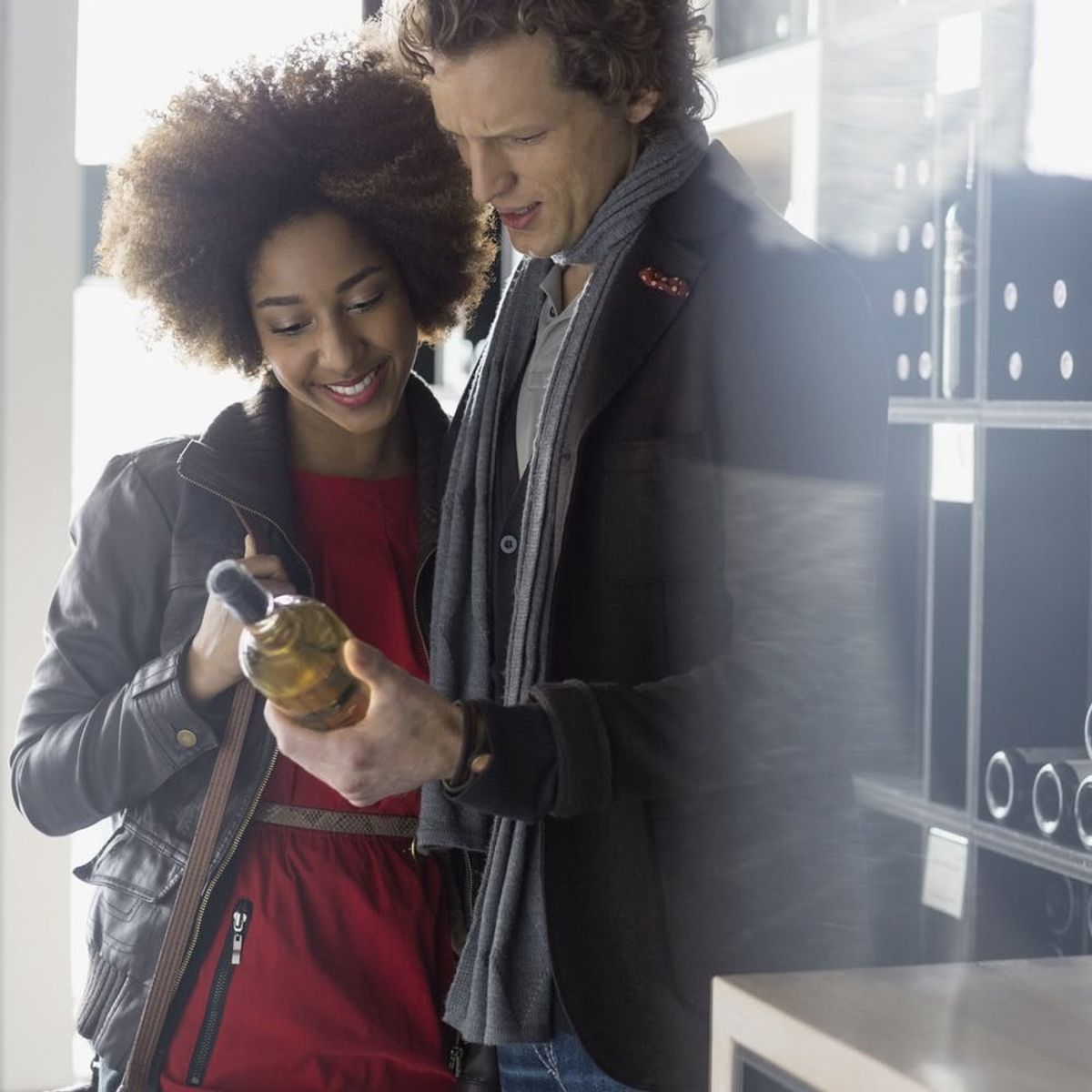Get ready for the merlo-down.
Here’s What to Actually Look for on a Wine Label

We’ve all been there: standing in the wine aisle at the grocery store or wandering the local wine shop completely overwhelmed by the options, then choosing a bottle for our veggie dinner pairing based solely on whichever one has the coolest-looking label. But so often, the wine inside the bottle doesn’t live up to its cute packaging. And even if the wine was less than $15, it’s still a bummer to drink bad wine (hey, we millennials love our wine)! So we chatted with Diane Gross, owner of Cork Wine Bar in Washington DC, to get some quick tips on how to distinguish the real deal from a bogus bottle. Time to choose wine by reading the label the right way.
1. Importers can be tastemakers. Each importing company that brings wine into the US from other countries has its own taste profile and personality. Some lean toward old world, traditional styles from France and Italy, while others may like experimenting with unusual options from Greece or Hungary. Diane says “find importers you like and then you can trust their selections. Try looking for Rosenthal, Kermit Lynch and Louis Dressner importer labels on the bottle.”
2. Estate wines FTW. Diane explains, “Estate wines mean that the person growing the grapes is making the wine, not purchasing the fruit or juice, not relying on cooperatives or negotiants. They’re often smaller production and more hands-on winemaking with little intervention in the fields.” Look for the words “estate wine” on the label and make sure that the label says the grapes were “grown, produced and bottled” all in the same place. More often than not, an estate wine is going to be a superior choice to a wine that’s seen many hands in many different places before ending up in the bottle.
3. Get GPS-level specific. If an estate wine isn’t an option, be sure to get as geographically specific as possible. A wine from Napa Valley is a much better choice than when it just says “California” on the label, because at least you know the grapes were all grown in the same climate. Plus, Diane says that geography is the easiest way to find a bottle you’ll enjoy, saying “finding a region that you like helps to narrow down the selection. For example, if you know you like Rioja, you can look for that region and pick from the selections the store has.”
4. Listen to the French and Italian government! Both the Italian and French governments have helpful classification systems for their wines to identify the best winemakers. Diane explains, “DOC is a superior wine while DOCG means that the wines meet the strictest governmental standards. The AOC designation in France shows that the winemaker is meeting the governmental standards for producing and aging the wines.” These labels are usually found around the neck of the bottle and can come at various price points. Finding a bottle with one of these stickers is often a sure bet for a better tasting wine than a bottle without.
What’s your foolproof method for choosing a new wine you know you’ll love? Tweet us @BritandCo and tell us your ways!













